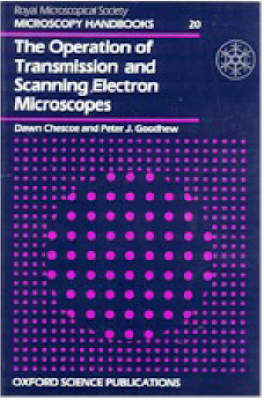Royal Microscopical Society Microscopy Handbooks
1 primary work • 3 total works
Book 2
The Operation of the Transmission Electron Microscope
by Dawn Chescoe and P. J. Goodhew
Published 16 August 1984
v. 20
The Operation of Transmission and Scanning Electron Microscopes
by Dawn Chescoe and P. J. Goodhew
Published 15 June 1990
Electron miscrosopy is an important technique of broad applicability. Developed to overcome some of the limitations of light microscopy, it offers significantly improved resolution, and its use has grown rapidly in recent years. The instruments are classified into two main groups: scanning electron microscopes are used to study surface morphology, whilst transmission electron microscopes explore the internal structure of a thin specimen. This laboratory guide provides an introduction to the techniques, and leads the beginner through the principles and operation of both transmission and scanning electron microscopes. The book begins by discussing how and why electron microscopes work, with explanations of the electron gun, electromagnetic lenses, electron detection and the vacuum system. The operation and alignment of the transmission and scanning electron microscopes are covered in separate chapters. Detailed instructions enable the novice to produce successful micrographs, and the book includes advice on how to optimise the accelerating voltage, condenser lens settings, aperture size amd magnification on photographic recording.
This introduction will be of value to workers in a variety of fields, including biology, medicine, physics, materials science and engineering.
This introduction will be of value to workers in a variety of fields, including biology, medicine, physics, materials science and engineering.
v. 16
Light-element Analysis in the Transmission Electron Microscope
by P.M. Budd and P. J. Goodhew
Published 28 April 1988

